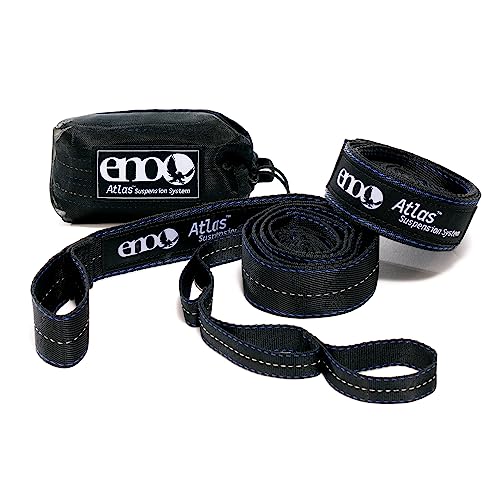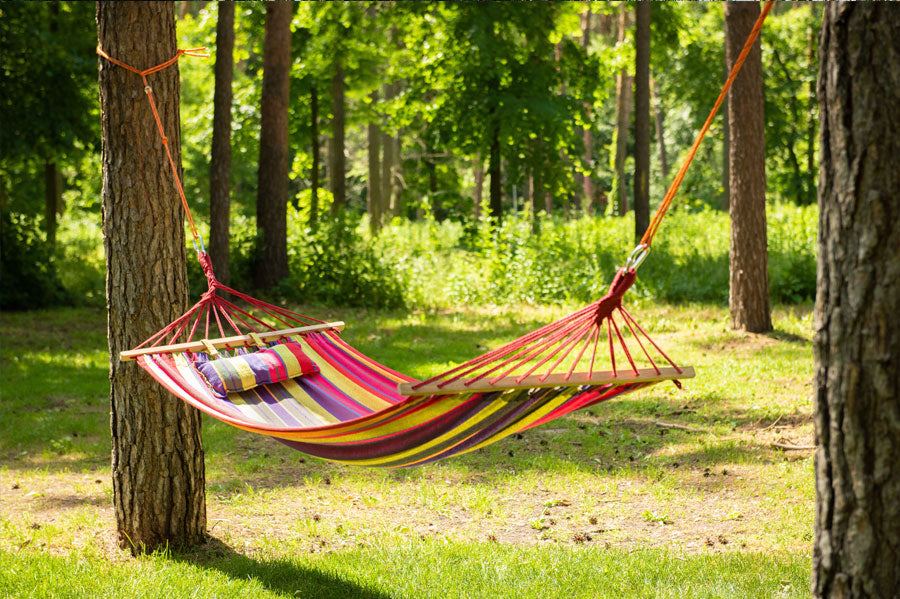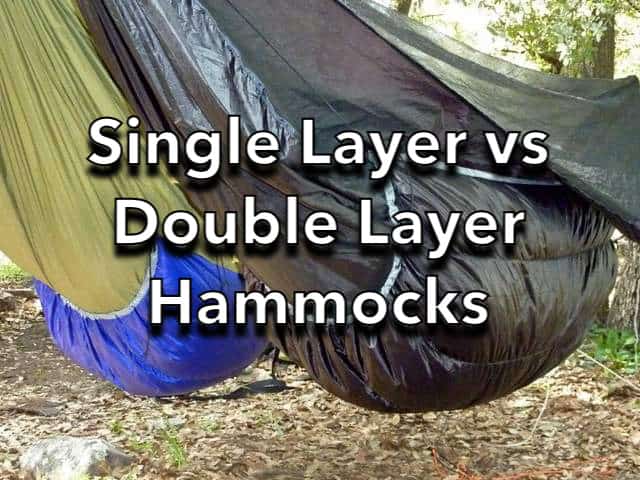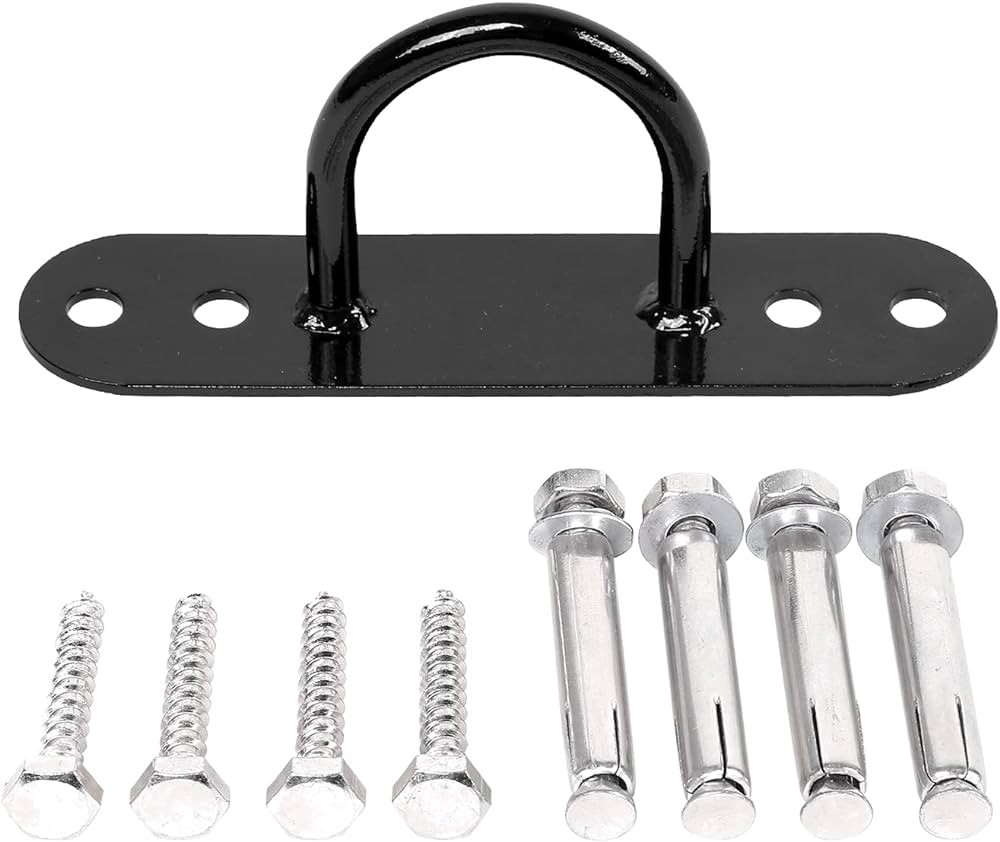- 8 Airplane Footrest Hammock!Travel comfortably - October 9, 2023
- top 7 Pool Float Water Hammock for a Relaxing Summer - October 9, 2023
- top 5 Space SaverSingle Hammock Stand Maximize Comfort and Space - October 9, 2023
To make a hammock more comfortable, try hanging it with a good sag, resembling a smiley face, instead of stringing it up tightly between anchor points. This will prevent a cocooning effect that can squeeze your shoulders and bow your back uncomfortably.
Additionally, you can slide into the hammock on the diagonal to make the surface flatter and less curved, which will further enhance comfort. Don’t forget to use head pillows and bring a blanket or throw for extra coziness. Sleeping in a hammock is safe and can even help reduce tossing and turning.
By following these tips, you can create a more comfortable and relaxing hammock experience.
1. Choosing The Right Hammock Material
Different Types Of Hammock Materials
When it comes to making your hammock more comfortable, one of the most important factors to consider is the type of material it is made from. Different materials offer varying levels of comfort and durability, so it’s essential to choose the right one for your needs. Here are some common types of hammock materials:
| Material | Description |
|---|---|
| Cotton | Cotton hammocks are soft, breathable, and offer a comfortable surface to lie on. They are also easy to clean and maintain. However, cotton tends to absorb moisture, so it may not be the best option for outdoor use. |
| Polyester | Polyester hammocks are lightweight, quick-drying, and resistant to mildew. They are a great choice for outdoor use as they can withstand various weather conditions. However, polyester may not be as soft and comfortable as cotton. |
| Nylon | Nylon hammocks are lightweight, strong, and offer excellent durability. They can be a good option for outdoor use as they dry quickly and resist mildew. However, nylon may not provide the same level of comfort as cotton. |
Benefits And Drawbacks Of Each Material
Each hammock material has its own set of benefits and drawbacks. Here’s a quick overview:
- Cotton: Soft, breathable, and easy to clean. However, it may not be suitable for outdoor use due to its moisture-absorbing properties.
- Polyester: Lightweight, quick-drying, and resistant to mildew. Ideal for outdoor use, but it may not be as comfortable as cotton.
- Nylon: Lightweight, strong, and durable. Quick-drying and mildew-resistant, making it suitable for outdoor use. However, it may not offer the same level of comfort as cotton.
Factors To Consider When Selecting A Material
When choosing the right material for your hammock, consider the following factors:
- Comfort: Ensure the material provides the level of comfort you desire.
- Durability: Consider the lifespan of the material and its ability to withstand outdoor conditions.
- Maintenance: Determine if the material requires any special care or cleaning methods.
- Portability: If you plan to carry your hammock on camping trips or adventures, consider the weight and packability of the material.
- Price: Set a budget and choose a material that fits within your financial limitations.
By considering these factors, you can select a hammock material that offers both comfort and durability, ensuring a more comfortable lounging experience.
2. Adding Padding And Insulation
When it comes to hammock comfort, adding padding and insulation can make all the difference. Not only can it enhance your relaxation experience, but it can also provide extra warmth and support during chilly nights. In this section, we will discuss the importance of adding padding to a hammock, explore the different types of padding options available, and provide tips on how to properly add insulation for added comfort.
Importance Of Adding Padding To A Hammock
Adding padding to your hammock is crucial for maximizing your comfort. It not only softens the surface but also provides additional support to your body, preventing discomfort and pressure points. Whether you’re planning a long camping trip or simply enjoying a leisurely nap in your backyard, a well-padded hammock can transform your experience into a truly relaxing one.
Types Of Padding Options Available
There are various padding options available to make your hammock more comfortable. Consider the following options:
| Padding Option | Description |
|---|---|
| 1. Hammock Underquilt | A hammock underquilt is a specialized insulation layer that attaches to the bottom of your hammock, providing warmth from beneath. It is an excellent option for cold weather camping. |
| 2. Sleeping Pad | A sleeping pad is a popular choice for hammock campers. It not only adds cushioning but also insulates you from the cold ground, enhancing your overall comfort. |
| 3. Pillows and Cushions | Adding pillows and cushions to your hammock can significantly improve neck and head support. They provide an extra layer of comfort, especially for extended periods of relaxation. |
How To Properly Add Insulation For Added Comfort
When it comes to adding insulation to your hammock, here are a few tips to consider:
- 1. Attach the hammock underquilt or sleeping pad securely to the underside of the hammock, ensuring it covers your entire body for maximum insulation.
- 2. Adjust the underquilt or sleeping pad to achieve the desired level of warmth and comfort.
- 3. Place pillows or cushions strategically to provide support for your head, neck, and back.
- 4. Experiment with different combinations of padding options until you find the perfect setup that suits your preferences.
By adding padding and insulation to your hammock, you can create a cozy and comfortable oasis for relaxation and rejuvenation. So go ahead, enhance your hammock experience and enjoy the ultimate comfort!
3. Enhancing Hammock Support And Stability
Proper support and stability are crucial for making your hammock more comfortable. By ensuring that your hammock is well-supported and stable, you can achieve a better sleeping experience and reduce the risk of discomfort or even injury. Here are some tips and techniques to enhance the support and stability of your hammock:
Importance Of Ensuring Proper Support For The Hammock
Having the right support for your hammock is essential for a comfortable and safe experience. When hanging your hammock, avoid the mistake of hanging it too tightly between anchor points. This can create a cocooning effect, causing discomfort, shoulder squeezing, and a bowing back. Instead, aim for a smiley face-shaped sag. A hammock with a proper sag allows for better body positioning, reducing pressure points and providing optimum comfort.
Tips For Adjusting Hammock Tension And Sag
To achieve the perfect sag in your hammock, follow these tips:
- Start by adjusting the distance between your anchor points. A longer distance creates more sag, while a shorter distance creates less sag.
- Make sure the suspension straps or ropes are evenly tensioned on both sides to maintain balance.
- Try different hanging heights and angles to find the most comfortable position for your hammock.
- Use a tape measure or your own body as a reference to ensure consistent sag every time you set up your hammock.
Using Suspension Systems And Stabilizers For Added Stability
In addition to adjusting tension and sag, you can enhance the stability of your hammock with suspension systems and stabilizers. Here are some options:
| Suspension Systems | A tree-friendly suspension system, such as tree straps or webbing, helps distribute weight evenly and protects the trees. Look for ones that are adjustable and easy to set up. |
| Stabilizers | Stabilizers, like hammock spreader bars or ridgelines, can help keep your hammock flat and prevent excessive sagging. They provide additional support and stability, especially when combined with proper tensioning. |
By using these suspension systems and stabilizers, you can ensure your hammock stays securely in place and provide a more comfortable sleeping experience.
Remember, a well-supported and stable hammock is key to maximizing your comfort while enjoying the outdoors. Take the time to properly adjust the tension and sag, and consider using suspension systems and stabilizers for added stability. With these enhancements, you can enjoy a relaxing and cozy time in your hammock.
4. Installing Hammock Accessories For Comfort
Enhancing the comfort of your hammock is all about the details. By adding some carefully selected accessories, you can transform your hammock into the ultimate relaxation spot. Here are a few options to consider:
Adding A Hammock Pillow Or Headrest For Neck Support
One of the quickest ways to make your hammock more comfortable is by adding a pillow or headrest for extra neck support. This accessory not only provides a soft place to rest your head but also helps to align your neck and spine, reducing the risk of stiffness and discomfort. Choose a pillow that is specifically designed for hammocks, as they are usually made from weather-resistant materials that can withstand outdoor conditions.
Utilizing A Hammock Blanket Or Throw For Added Coziness
When the temperatures start to drop or you simply want to add an extra layer of comfort, a hammock blanket or throw is the perfect accessory. These cozy blankets are specifically designed for hammocks and are often made from soft, durable materials that can withstand outdoor use. Whether you prefer a fleece blanket for extra warmth or a lightweight throw for those cool summer nights, adding this accessory will enhance your hammock experience.
Incorporating Accessories Like Cup Holders And Storage Pouches
Why settle for an ordinary hammock when you can have one that is equipped with convenient accessories? Consider adding cup holders to keep your favorite beverage within arm’s reach, so you can fully relax without having to get up. Additionally, storage pouches are perfect for keeping your essentials nearby, such as books, sunscreen, or even your phone. These accessories ensure that everything you need is right at your fingertips, making your hammock experience even more enjoyable.
By installing these hammock accessories, you can take your relaxation to the next level. Whether you’re lounging in your backyard or embarking on a camping trip, these additions will ensure that your hammock is the epitome of comfort. So go ahead, grab your pillow, wrap yourself in a cozy blanket, and enjoy the ultimate relaxation experience.
5. Creating A Relaxing Ambiance
When it comes to making a hammock more comfortable, it’s not just about the physical setup. Creating a relaxing ambiance plays a vital role in enhancing your hammock experience. Let’s explore some ways to transform your hammock area into a serene and tranquil retreat.
Setting Up The Hammock In A Shaded And Peaceful Location
Choosing the right location for your hammock is crucial for creating a soothing atmosphere. Look for a shaded spot in your backyard or garden, away from the hustle and bustle of daily life. The soothing sounds of birds chirping and leaves rustling can add to the overall calmness of your hammock retreat.
Using Decorative Elements To Enhance The Hammock Area
Adding decorative elements can instantly transform your hammock area into a cozy oasis. Consider hanging fairy lights or lanterns around the hammock to create a soft and whimsical ambiance during evening relaxation sessions. You can also introduce potted plants or a small water feature nearby to enhance the natural tranquility of your space.
Incorporating Relaxation Techniques Like Aromatherapy Or Music
Engaging your senses can significantly enhance your hammock experience. Use aromatic essential oils or scented candles to create a calming aroma in the air. Choose relaxing music or nature sounds to play softly in the background, enveloping you in a peaceful auditory experience while you unwind in your hammock.
Moreover, you can take your relaxation to the next level by incorporating guided meditation or breathing exercises into your hammock routine. These techniques can help you release stress and fully embrace the tranquility of your surroundings.
Hammock relaxation is not just about physical comfort; it’s about creating an environment that nourishes your mind, body, and soul. By setting up your hammock in a shaded and peaceful location, using decorative elements to enhance the area, and incorporating relaxation techniques like aromatherapy or music, you can elevate your hammock experience to the ultimate level of comfort and serenity.

Credit: www.amazon.com
Frequently Asked Questions Of How To Make A Hammock More Comfortable
Why Can’t I Get Comfortable In A Hammock?
To get more comfortable in a hammock, avoid stringing it up tightly between anchor points. Instead, hang it with a slight sag, like a smiley face. This will prevent shoulder squeezing and back discomfort. Adding a head pillow and using trees for shade can also make your hammock cozy.
Sleeping in a hammock is safe if it’s properly set up, and sleeping on a diagonal position can make it even more comfortable.
How Do You Make A Hammock Cozy?
To make a hammock cozy, hang it with a good sag for a comfortable smiley face shape. Use trees for shade and stability. Add a head pillow and a blanket or throw for extra comfort. Avoid sleeping in a hammock every night to prevent strain on your body.
Is It Ok To Sleep In A Hammock Every Night?
Sleeping in a hammock every night is safe and can be comfortable if set up properly. Hammocks hold your body in place, reducing tossing and turning. Sleeping on a diagonal and adding pillows or blankets can make it even cozier.
Avoid tying the hammock too tightly, as it can cause discomfort.
How Do You Sleep In A Hammock Full Time?
To sleep comfortably in a hammock full time, hang it with a good sag, not too tight. Use a head pillow and consider adding a blanket for extra coziness. Sleeping on the diagonal will make the surface flatter and more comfortable.
Sliding up and down can help find the right support for your head and neck.
Why Is It Difficult To Get Comfortable In A Hammock?
Stringing up a hammock tightly can cause discomfort. Hanging it with a good sag, like a smiley face, is more comfortable.
How Can I Make My Hammock More Cozy?
Add shade with trees and bring along pillows and blankets for extra comfort. Textiles can make your hammock feel cozy.
Conclusion
To make your hammock even more comfortable, avoid the common mistake of hanging it too tightly. This can lead to discomfort and a cramped sleeping position. Instead, aim for a good sag, resembling a smiley face shape. Additionally, adding pillows and blankets can enhance coziness during your hammock time.
Remember to also slide into the hammock on the diagonal for a flatter and less curved sleeping surface. So, follow these tips and enjoy the ultimate relaxation in your hammock.






Pingback: Top 10 Side Sleeping Hammock For Unbeatable Comfort